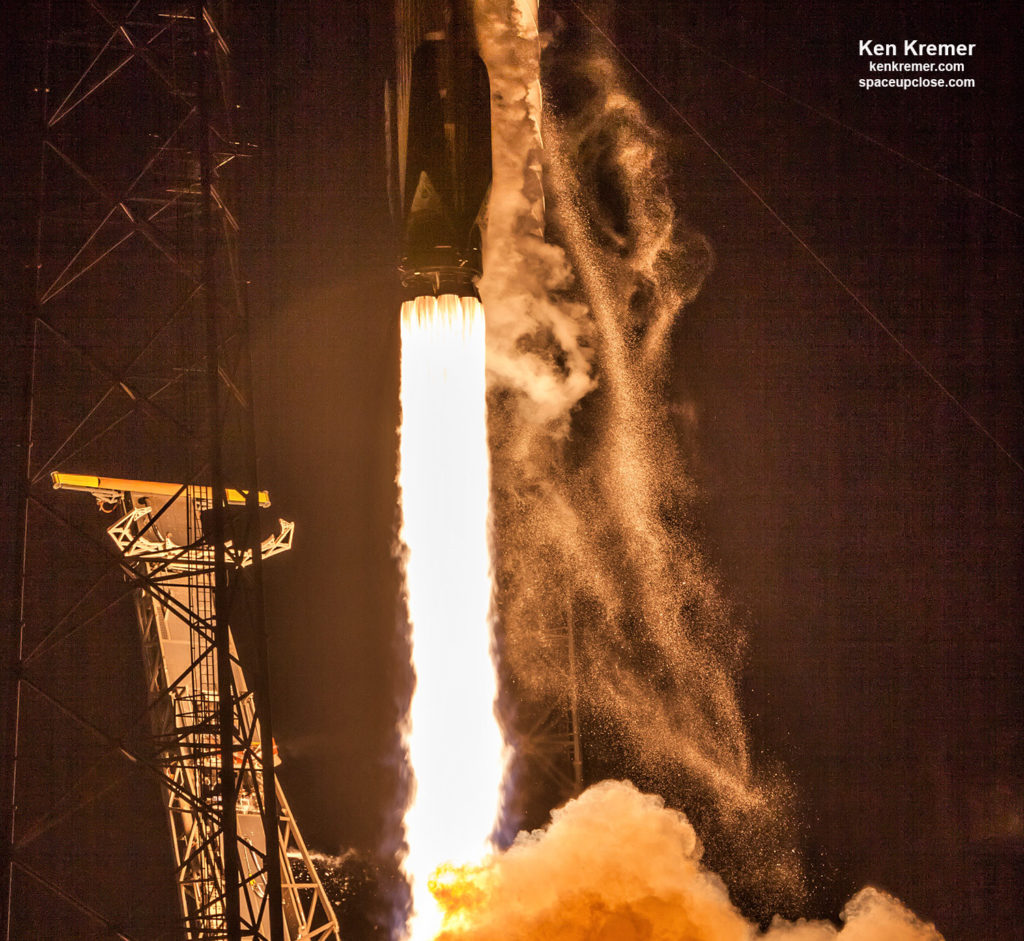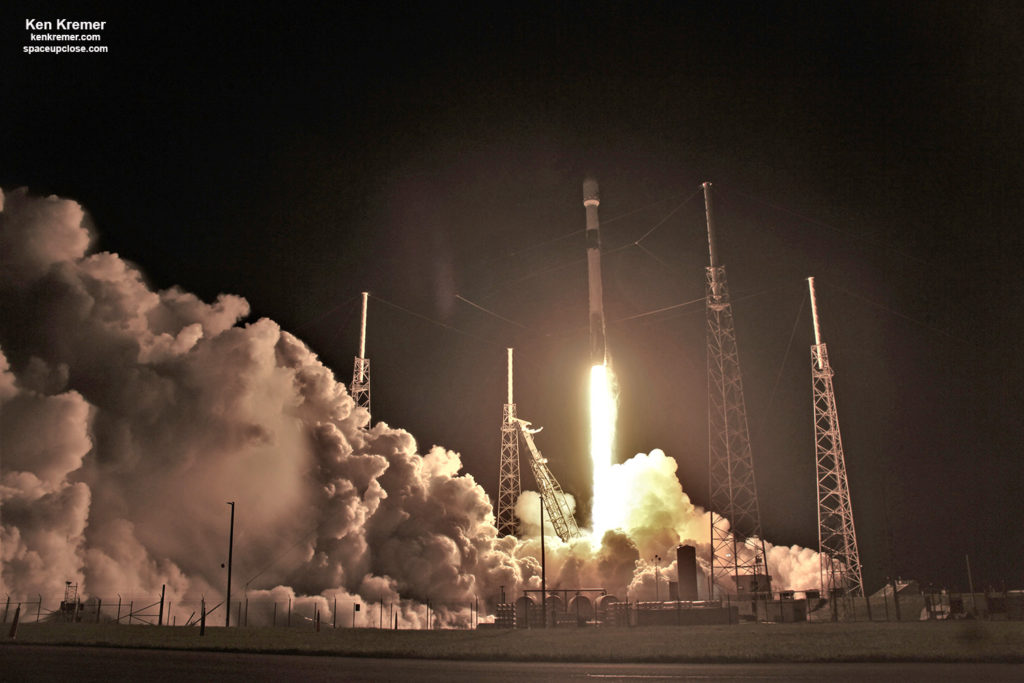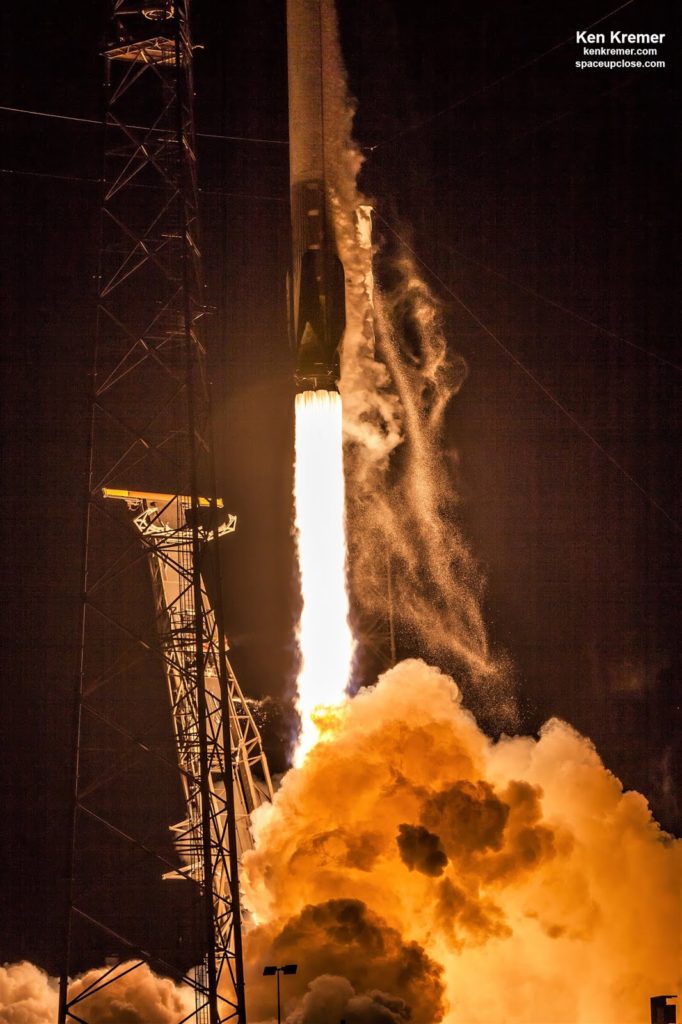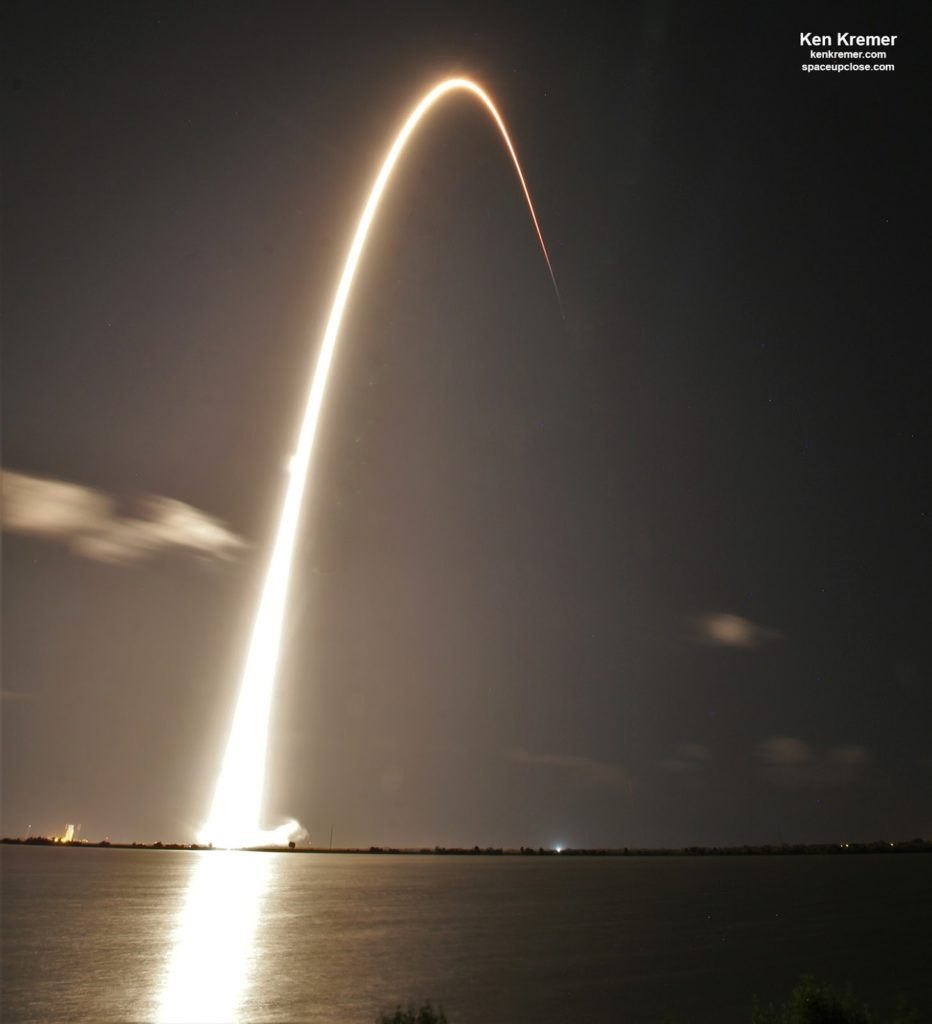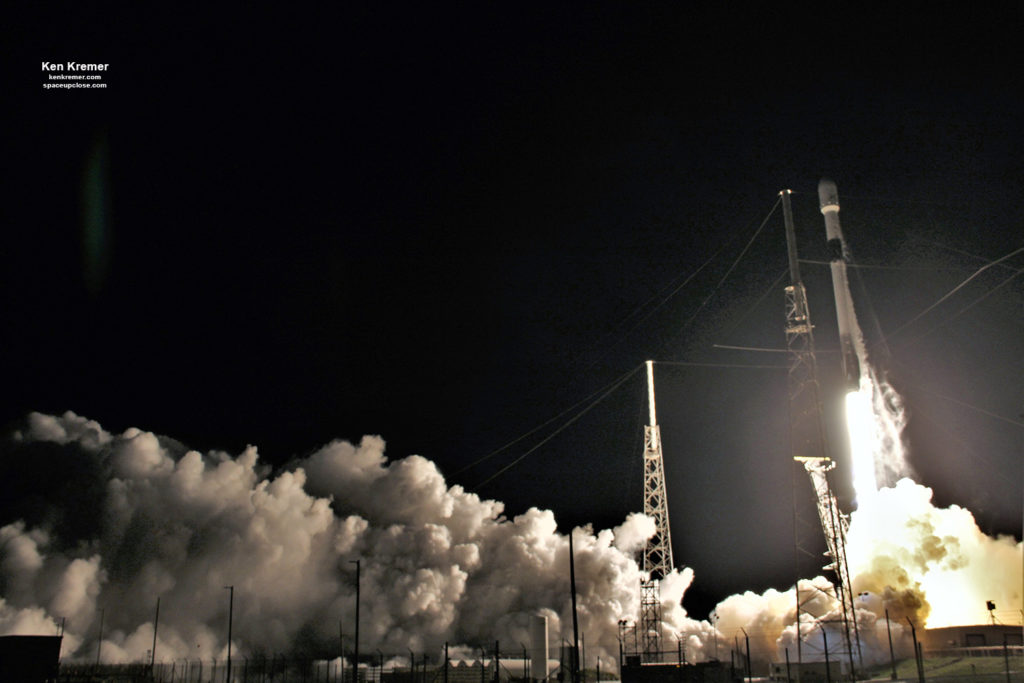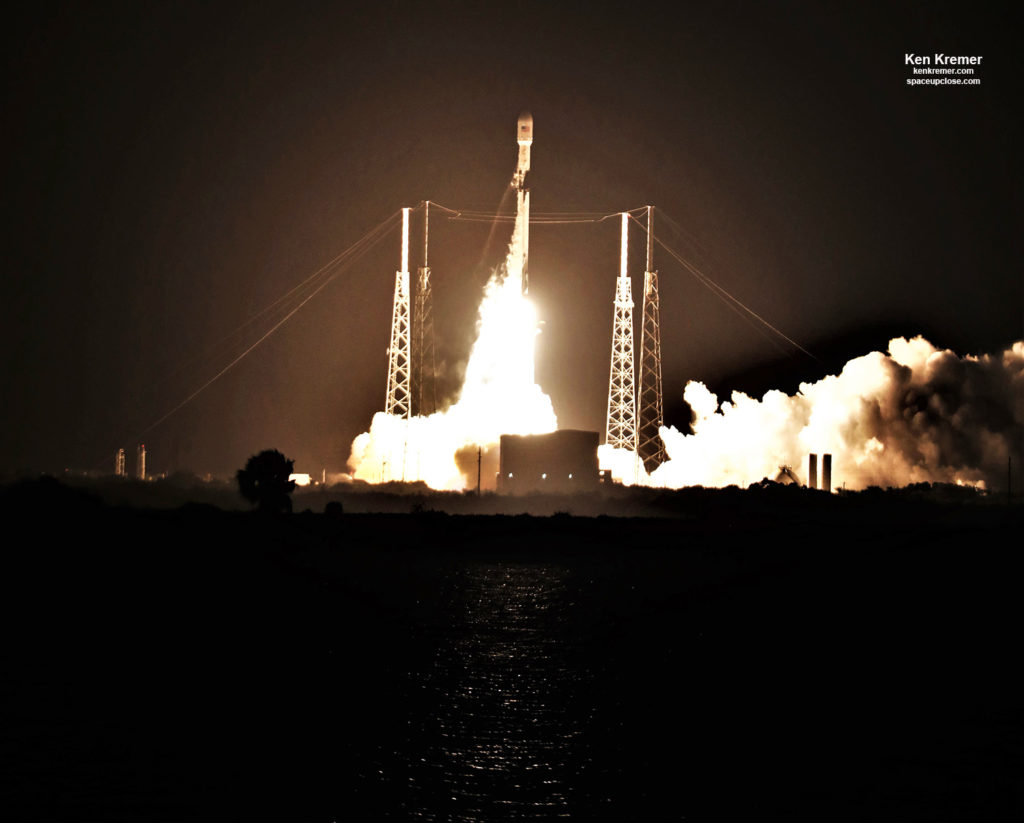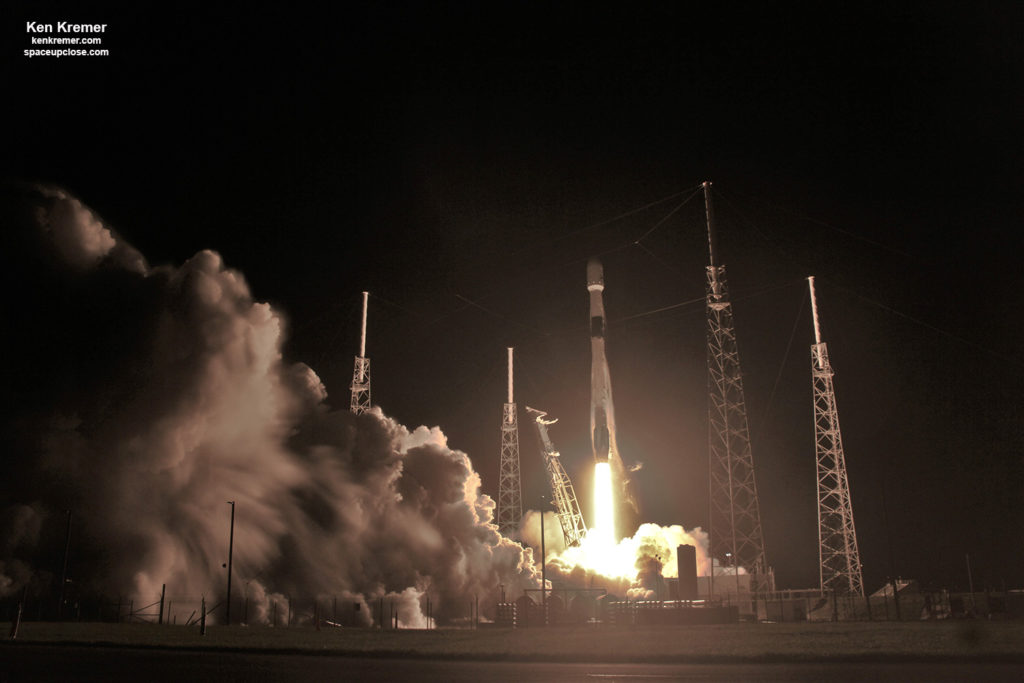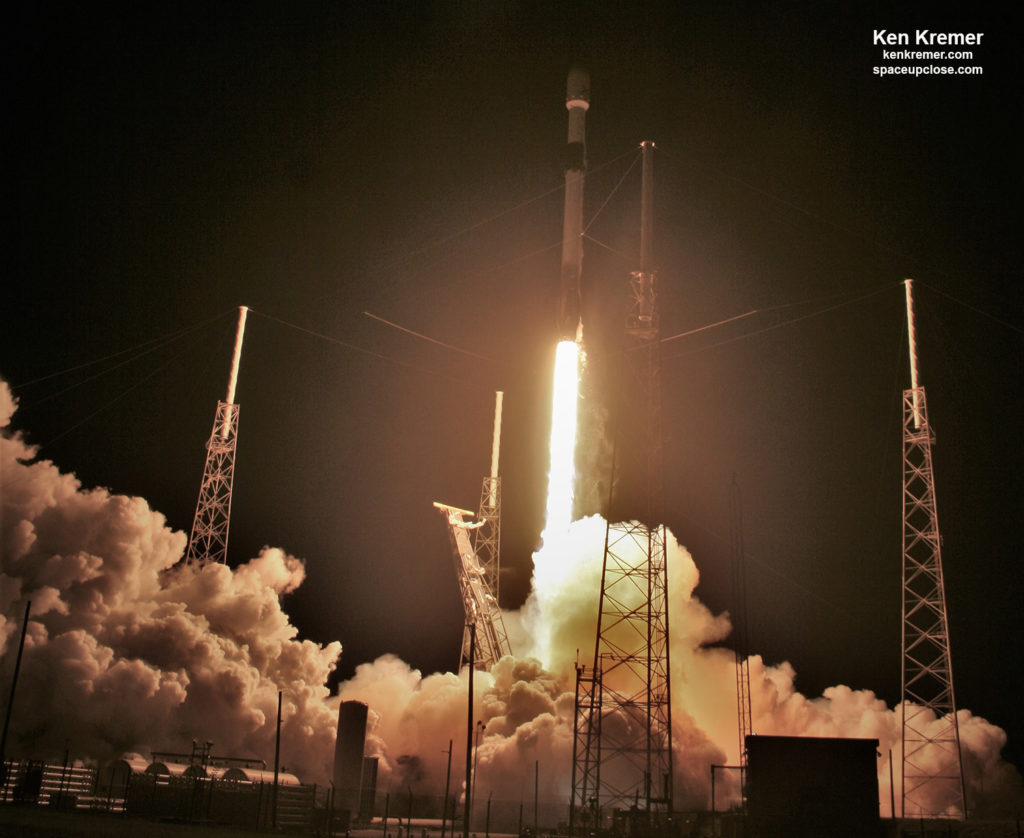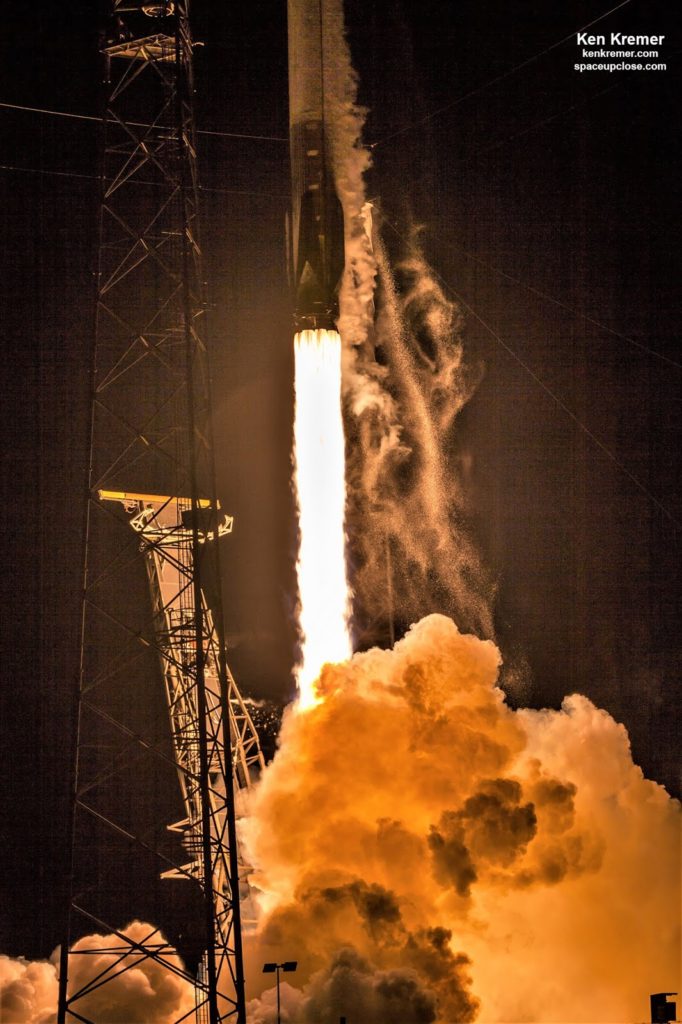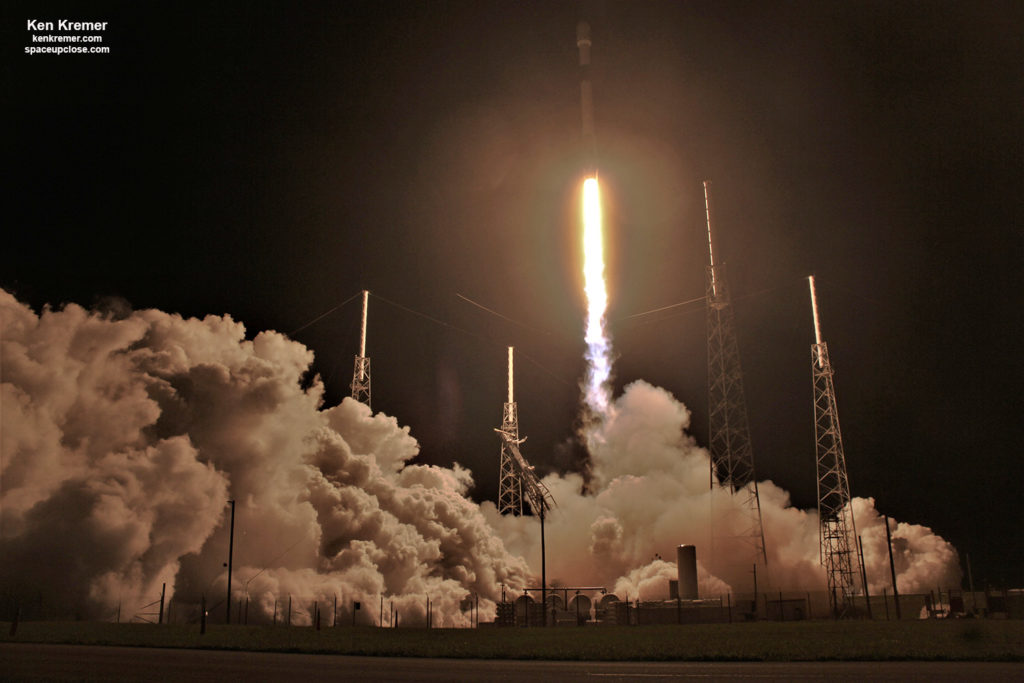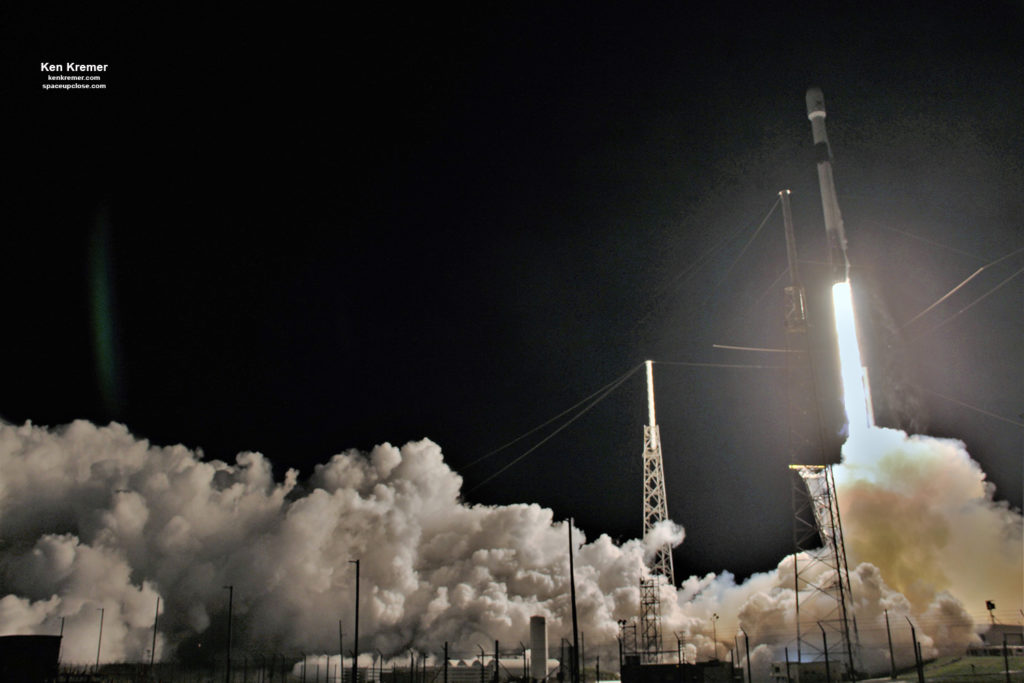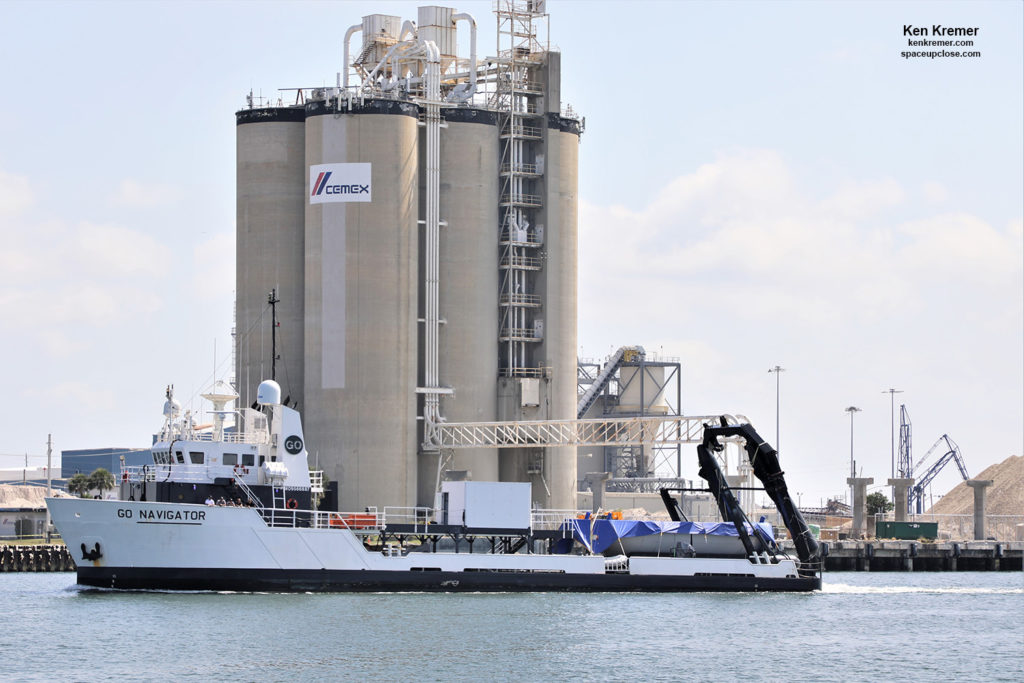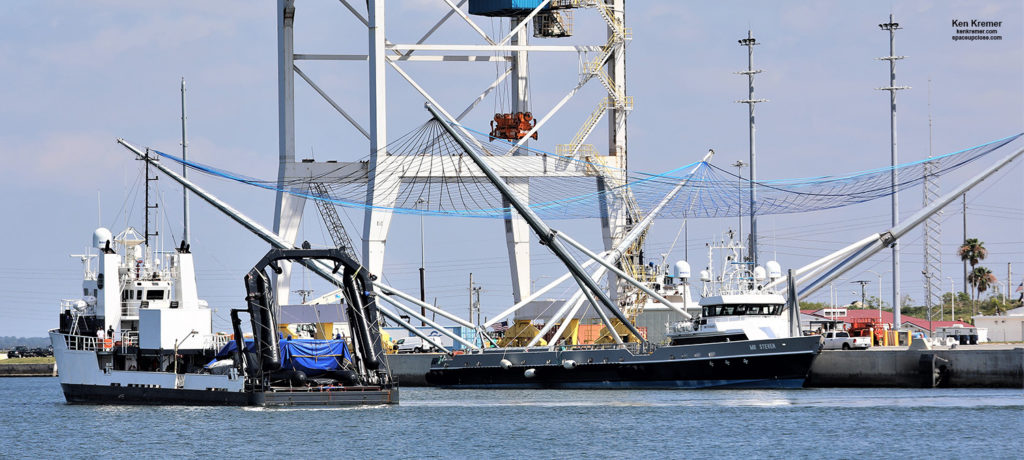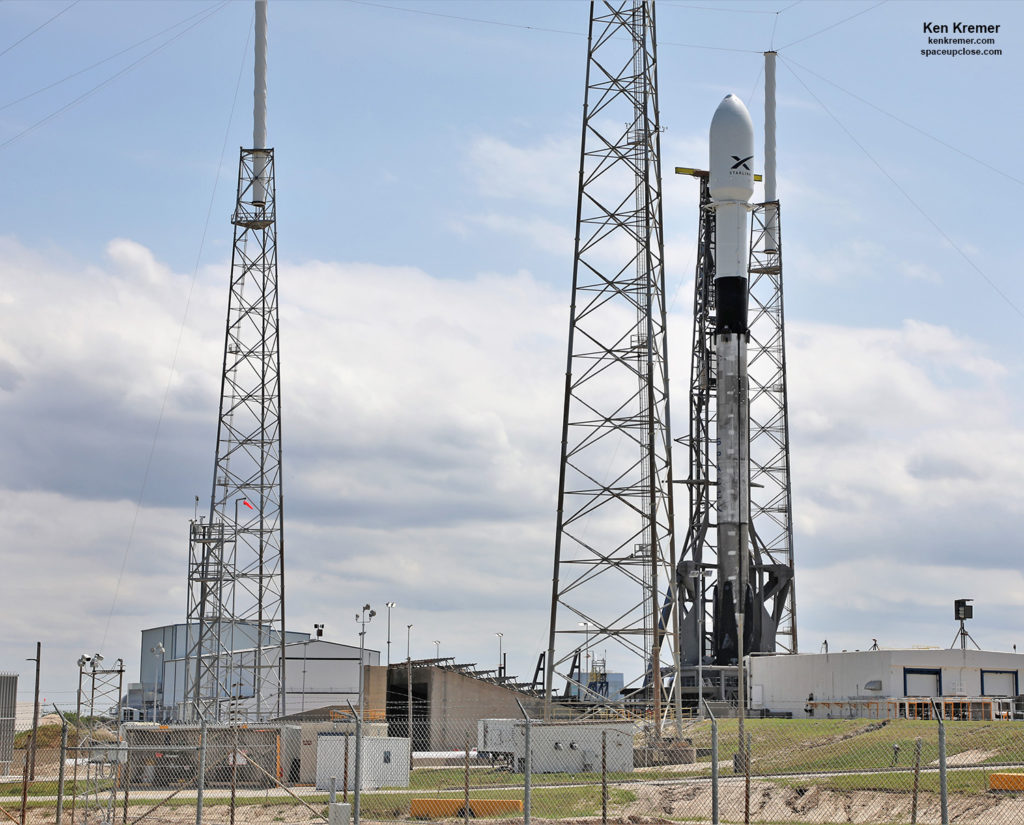Ken
Kremer — SpaceUpClose.com &
RocketSTEM – 26 May 2019
CAPE CANAVERAL AIR FORCE STATION, FL – SpaceX’s highly anticipated Starlink broadband
constellation has begun with the 1st blastoff of the inaugural batch of 60 satellites
on the firms Falcon 9 rocket on what
turned out to be the third try on Thursday evening May 23 as the recycled Falcon
9 rocket soared to space.
In the not to distant future the Starlink constellation
will grow to many thousands of next generation satellites that could very will revolutionize
the way the world accesses and uses the internet in the next few years by slashing
prices and broadening coverage to hard to reach places across the globe.
At least that’s the hope and dream put
forth by SpaceX CEO and billionaire founder Elon Musk for his planned network
of Low Earth orbiting (LEO) Starlink satellites aiming to provide global high speed broadband
internet services to customers worldwide.
Up to 6 more Starlink launches could take
place this year, Musk tweeted post launch.
Enjoy our Space UpClose gallery of photo and video imagery
from the launch and prelaunch activities.
Check back as the gallery grows.
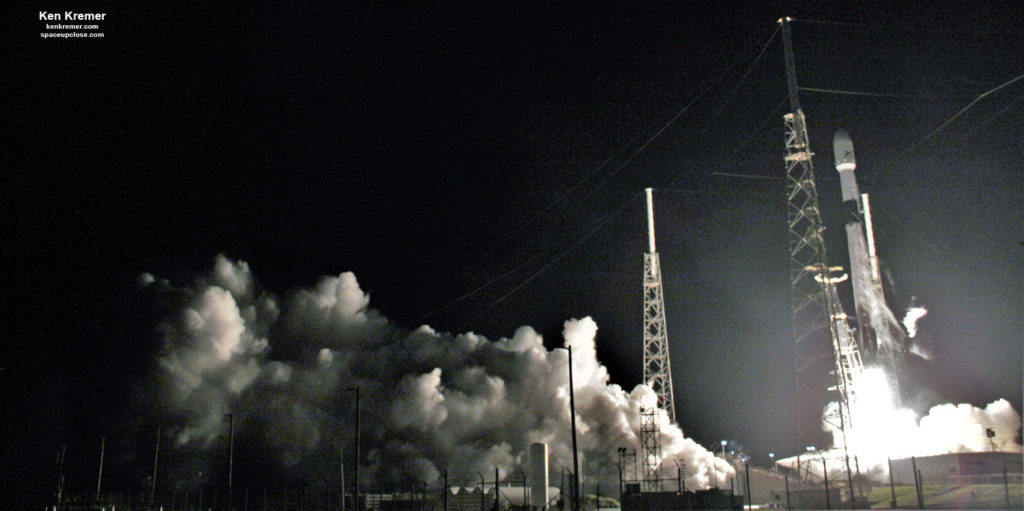 |
|
Starlink 1 comsat launch on SpaceX Falcon 9 on 23 May 2019 from Cape Canaveral, FL. Credit: Ken
Kremer/kenkremer.com/spaceupclose.com |
Developing and building the first 60 Starlink
satellites “is one of the hardest engineering projects I’ve ever seen done [and
SpaceX has ever undertaken],” Musk said as he outlined his first detailed
vision of the firms Starlink broadband constellation in a prelaunch media conference
call on May 15 – just hours prior to the original target launch date that eventually
was scrubbed minutes before liftoff due to powerful upper altitude winds.
“The goal of the Starlink system is to provide
high bandwidth, low latency connectivity, ideally throughout the world that will offer an alternative to expensive services
and also provide internet options to places where no connectivity is currently
available.”
p.m. EDT Thursday, May 23 (0230 GMT Friday) from
Space Launch Complex-40 (SLC-40) on Cape Canaveral Air Force Station, FL.
spectacle for spectators as Falcon thundered off the launch pad and the engines
roar crackled as loud as we’ve ever heard.
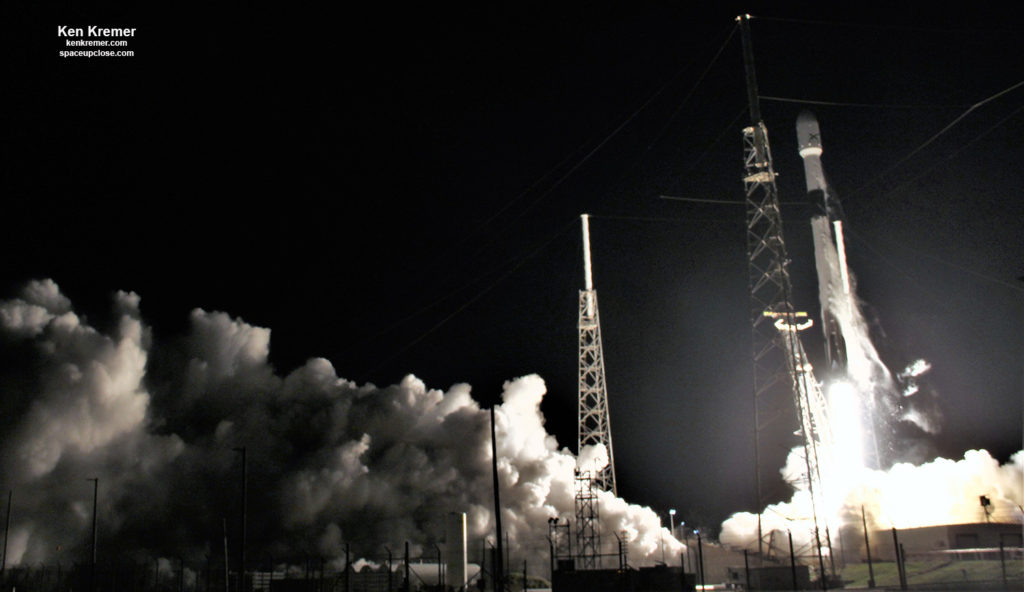 |
|
Starlink 1 high speed internet comsat launch
on SpaceX Falcon 9 on 23 May 2019 from Cape Canaveral, FL. Credit: Ken Kremer/kenkremer.com/spaceupclose.com |
The 229-foot-tall (70-meter)
Falcon 9 ignited at 10;30 p.m. EDT right at the opening of the 90 minute long launch
window with 1.7 million pounds of liftoff thrust spewing from the 9 Merlin 1D first
stage engines fueled by liquid oxygen and RP-1 propellants.
SpaceX built Starlink high speed broadband satellites lifts off at 10:30 p.m.
ET on May 23, 2019 from Space Launch Complex-40 on Cape Canaveral Air Force Station,
FL on Starlink-1 mission – as seen in this video
camera stationed at pad. Credit: Ken
Kremer/kenkremer.com/spaceupclose.com
week – first for excessive and powerful upper levels winds which could destroy
the rocket on ascent through the atmosphere on the originally targeted date of
May 15. And second to fix a pesky software issue that was only discovered several
hours prior to the second attempt on May 16
reliable and affordable high-speed broadband services,” says SpaceX.
after parachute assisted splashdown, hauled out of the Atlantic Ocean and
sailed into Port Canaveral, Sunday, May 26. See our story/photos
Orlando report from May 16 launch attempt:
http://www.fox35orlando.com/home/spacex-trying-again-for-launch-of-falcon-9-rocket
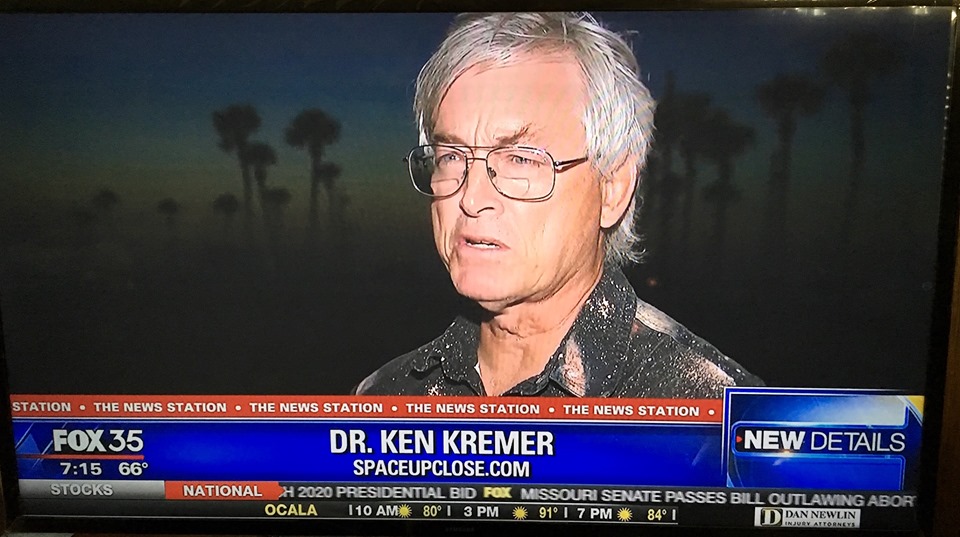 |
|
Dr. Ken Kremer/Space UpClose commentary about SpaceX
Starlink-1 launch with Fox 35 WOFL Orlando TV News |
Watch for Ken’s continuing
onsite coverage of NASA, SpaceX, ULA, Boeing, Lockheed Martin, Northrop Grumman
and more space and mission reports direct from the Kennedy Space Center, Cape
Canaveral Air Force Station, Florida and Wallops Flight Facility, Virginia.
Stay tuned here for Ken’s continuing Earth and
Planetary science and human spaceflight news: www.kenkremer.com –www.spaceupclose.com – twitter @ken_kremer
– email: ken at kenkremer.com
Dr. Kremer is a research scientist and journalist based in the
KSC area, active in outreach and interviewed regularly on TV and radio about
space topics.


